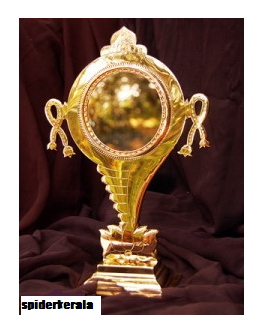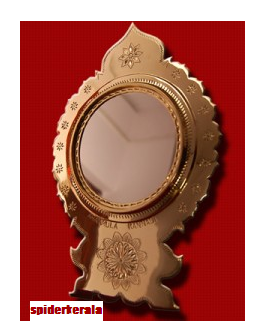The science behind the superior imaging in aranmula kannadi
Read about the science behind the superior imaging in aranmula kannadi. We all are familiar with the modern mercury or silver coated mirrors. But aranmula kannadi, a kerala science wonder works superior to the defects in the normal mirror. Read here the basic difference between aranmula kannadi and normal mirrors. Also give a glance into how aranmula kannadi tackles the optical problems such as aberration and secondary reflection by the help of its special engineering.
Aranmula kannadi is one of the most famous scientific creations Kept in the hearts of kerala. Today it is probably the best reason of proud for the aranmula village in kerala. We have been put in into our knowledge that aranmula Kannadi is superior over the modern popular silver coated mirrors. But actually, where the difference lies?Where the basic difference lie?
 The simplest explanation for the difference in the both image forming is in the surface where image formation takes place. A normal silver mirror is made by the successive coating of tin(2) chloride, silver, some activators and paint in one side of the plane glass. When viewed from the other side the glass shows the characteristics of the mirror. Basically there the reflection happens from the lower portion of the glass. So from the basic studies of optics theory one can argue that the small thickness, which may vary, can cause sufficient deviation from the exact image of the object. But aranmula kannadi is made directly from the unique composition of metals. Even though today the exact constituent elements and their percentage of use are kept as a secret, scientific world believes that it is mixture where copper and tin is the core.
The simplest explanation for the difference in the both image forming is in the surface where image formation takes place. A normal silver mirror is made by the successive coating of tin(2) chloride, silver, some activators and paint in one side of the plane glass. When viewed from the other side the glass shows the characteristics of the mirror. Basically there the reflection happens from the lower portion of the glass. So from the basic studies of optics theory one can argue that the small thickness, which may vary, can cause sufficient deviation from the exact image of the object. But aranmula kannadi is made directly from the unique composition of metals. Even though today the exact constituent elements and their percentage of use are kept as a secret, scientific world believes that it is mixture where copper and tin is the core.  After making the crude metal form the mirror is polished smoothly to bring the reflective property on its surface. So what we get is a direct image from the first surface. This reduces and neglects various optical unevenness created in the normal mirror mainly due to refraction.
After making the crude metal form the mirror is polished smoothly to bring the reflective property on its surface. So what we get is a direct image from the first surface. This reduces and neglects various optical unevenness created in the normal mirror mainly due to refraction.Optical phenomenon which could be avoided with use of aranmula kannadi
Mainly two things can happen as a defect in the normal mirrors. They are secondary reflection and aberration. The former happens because of the two reflections happen when light travel through the two surfaces in silver mirrors. Where as aberration happens due to the thickness of the mirror and so resulting refraction.
Aranmula kannadi and secondary reflection :Image forming reflection in normal mirror is happening from the lowest surface. But isn't it also possible that light get partially reflected from the first surface? So what we actually see is a distorted superimposition of a faint image from primary and a thick image from secondary surfaces. But in aranmulla kanndi problem don't arise as the reflection is solely from a single polished metal surface, there is just a single, unique and perfect image.
Aranmula kannadi and aberration :Aberration is the major optical discrepancy found in silver or mercury coated mirrors due to their second surface reflection. Aberrations are of different types, varying along with interactions of the light. What happens in the case of stationary image viewing in the mirrors is the optical aberration. When light travels through the thickness of the glass, due to refraction light ray bends slightly. This causes changes in the dimension of object lengthwise and may be depth wise. But by now we all know that there is no 'thickness' as reflection happens directly from the first surface light encounter. Yet again the engineering marvel done in the creation of aranmula kannadi succeeds.

 Job oriented
Job oriented